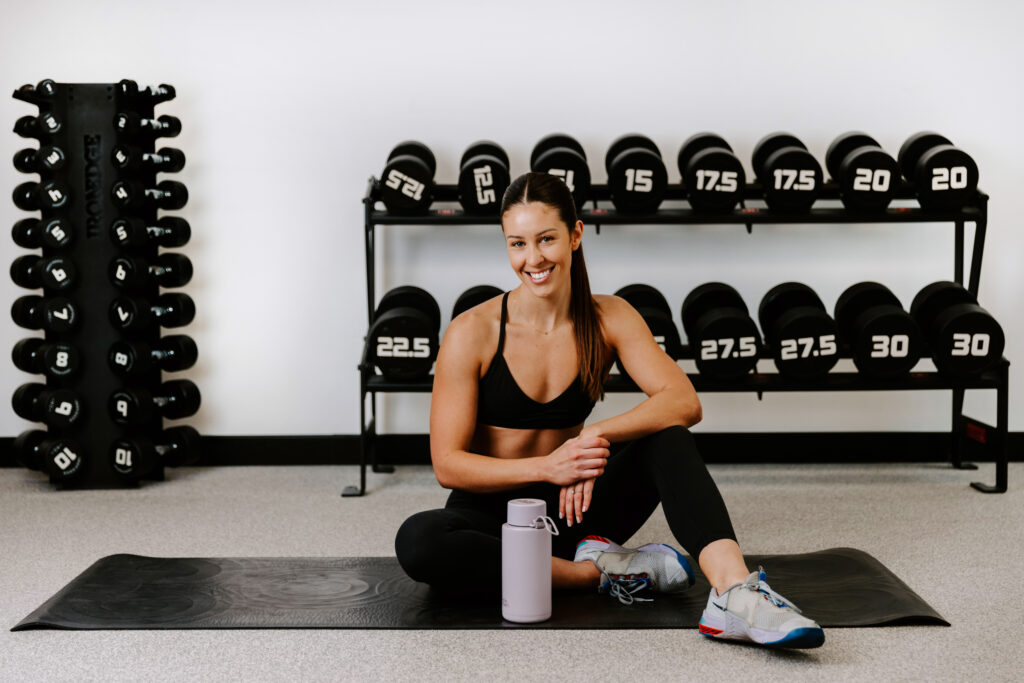When I first started training at the gym, my sessions looked a bit like this: 4 sets of 10 reps of everything. Bench press? 4×10. Squats? 4×10. Tricep pushdowns? You guessed it—4×10. My intensity hovered around a 7/10 effort, which at the time felt fine. I thought the more I did, the better. More sets = more gains, right?
But here’s the thing: most of that work was fluff. It wasn’t bad, but it wasn’t great either. I was spending a lot of time and energy doing more, but I wasn’t necessarily getting better.
Fast forward to now, as both a coach and someone who’s learned a lot along the way, my programming looks completely different—for myself and my clients. These days, I care way more about efficiency. I want my clients doing fewer sets with more focus and intensity, instead of endless volume just for the sake of it.
Why More Isn’t Always Better
It’s easy to fall into the trap of thinking you need to do 4+ sets of every exercise to make progress. Maybe you’ve seen it in workout plans online, or you just assume “more work = better results.” But the truth is, more isn’t always necessary—and sometimes it’s just a waste of your time and energy.
Research backs this up. Studies show that when it comes to strength and hypertrophy (muscle growth), quality trumps quantity. A systematic review published in Sports Medicine found that higher volumes can be beneficial, but only if the intensity and quality are there.¹ And when we say “intensity,” we’re talking about pushing closer to failure—those challenging last reps where you really feel the work.
If you’re breezing through 4 sets at a 6-7/10 effort, you’re not getting the same results as someone doing 2-3 sets at 9/10 intensity. Those extra sets aren’t doing much, and they might even be taking away from your recovery or your ability to give full effort on the next exercise.
Why I Program 2-4 Sets for Most Clients
When I write programs for my clients, I keep it simple. Most exercises fall into the 2-4 set range, with a clear focus on quality over quantity. Why?
- Efficiency: Most of my clients are busy, and I want them in and out of the gym without wasting time. Two to three really hard sets will almost always outperform four mediocre ones.
- Intensity Matters: If you’re hitting 2-4 sets with proper intensity—pushing close to failure—it’s more than enough to build strength and muscle.
- Recovery is Key: Endless sets can lead to fatigue, poor recovery, and burnout. Less volume means you can recover better and come back stronger for your next session.
- No Fluff Allowed: I don’t want useless volume in my programs. If it’s in there, it has a purpose.
How to Adjust Your Training
If you’re someone who’s been stuck in the “4 sets of everything” mindset, here’s how to rethink your training:
- Focus on Intensity: For compound lifts, aim to finish your last set feeling like you had 1-2 reps left in the tank (what’s called RPE 8-9). For isolation work, you can go even closer to failure.
- Cut the Fluff: If you’re adding sets just because it feels like you should, stop. Use that energy to make the sets you do perform as effective as possible.
- Prioritise Recovery: Less volume can mean better recovery—and better recovery means better results.

The Takeaway
More work isn’t always better work. If your training is all about chasing volume without hitting the intensity you need, you’re probably spinning your wheels. Instead, focus on fewer, high-quality sets where you’re actually working hard.
It’s not about doing more just because you can. It’s about doing the right amount—and doing it well. Trust me, your body (and your schedule) will thank you for it.
References
- Schoenfeld, B. J., et al. (2019). Effects of resistance training frequency on measures of muscle hypertrophy: A systematic review and meta-analysis. Sports Medicine.
- Steele, J., et al. (2017). A higher effort-based paradigm in resistance training: A focus on quality over quantity. Journal of Strength and Conditioning Research.

Comments +